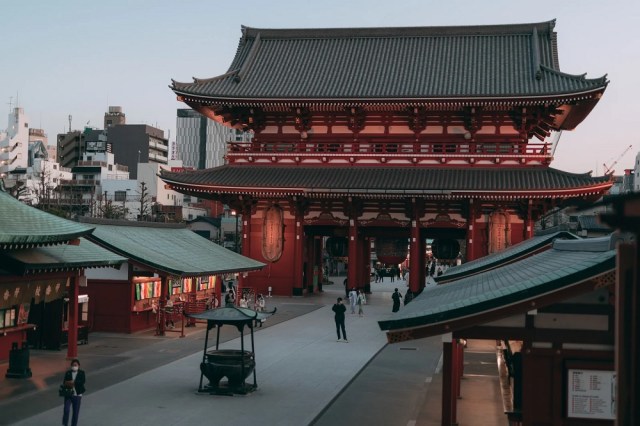
Plus, how hard is it to pull Sensoji’s semi-secret super-lucky omikuji fortune?
Sensoji, in Tokyo’s Asakusa neighborhood, is the city’s biggest, most important temple. That also makes it one of the most popular places for omikuji.
Omikuji is a traditional type of fortune-telling done at temples and shrines in Japan. For a small fee, you receive a strip of paper with your fortune, which falls into one of seven ranks, which in descending order of luckiness are:
● Daikichi: Great luck
● Kichi: Good luck
● Shokichi: Slightly good luck
● Hankichi: Half good luck
● Suekichi: Not-yet-fulfilled good luck
● Sueshokichi: Not-yet-fulfilled good luck
● Kyo: Bad luck
Our Japanese-language reporter Seiji Nakazawa lives within easy walking distance of Sensoji, so he’s stopped by to get an omikuji fortune a couple of times, but he’s never received a daikichi fortune there. What’s more, he’s heard rumors that a large portion of the omikuji fortunes that Sensoji gives out are of the lowest kyo category.
Seiji saw only one way to determine if these rumors were true: buy 100 omikuji fortunes in one day, and see how many he received of each rank. In the process, he learned something else too: Sensoji has a semi-secret de-facto super-lucky daikichi fortune!
This isn’t quite as expensive an experiment as you might think. Sensoji charges just 100 yen (US$0.70), which seems like a bargain for divine insight into your future.
Different places have different formats for how they sell their omikuji. Sensoji has a self-serve-style setup, in which you place your money in a collection box.
Then you pick up this hexagonal canister…
…shake it…
…and a stick with a number slides out.
These numbers, between 1 and 100, correspond with a series of drawers set into the wall. You open up the drawer with your number, and pull out your fortune.
It’s pretty simple, until you try to do it 100 times in a row. For one thing, the metal canister is surprisingly heavy. The sticks don’t slide out very easily, either. With 100 of them in there, they jostle around a lot as you shake, sometimes with one temporarily blocking the hole without coming out itself.
If you’re just getting one fortune, that extra physical and dramatic weight adds a little excitement. After doing about 30 with no break, though, Seiji’s thumb started to cramp up.
If you’re thinking that you’ve never had a thumb cramp, neither had Seiji before this. It’s a strange muscle to have cramp up on its own, so he needed a short break to rest his finger and wrap his mind around the situation.
Once he was good to go again, though, Seiji discovered that he’d developed some omikuji muscle memory, and now he could get the sticks to come out with just a few decisive motions.
Seiji’s stack of fortunes began to grow at an increasing rate, and once he had 100 of them, it was time to head back to SoraNews24 HQ to sort them into ranks.
So is it true that Sensoji is sticking people with tons of bad fortunes? It might look that way at first, with a tally of 26 kyo.
We also had six sueshokichi…
…10 suekichi, none of which are considered very good…
…plus two ho-hum hankichi.
But we also had five a-little-lucky shokichi…
…37 lucky kichi fortunes…
…and 14 top-rank-lucky daikichi!
▼ Left to right: kyo (凶), sueshokichi (末小吉), suekichi (末吉), hankichi (半吉), shokichi (小吉), kichi (吉), and daikichi (大吉).
So within our 100 omikuji, the most common fortune actually turned out to be kichi, not the unlucky kyo. What’s more, if we take the middle-of-the-road hankichi as the dividing line between good and bad luck, we had 56 good fortunes versus 42 bad.
▼ Seiji’s got a lot to smile about in the days ahead, according to his omikuji.
Oh, and that extra-lucky daikichi we mentioned? Like we said, each stick that comes out of the canister has a number on it, and all of the fortunes in the corresponding drawer are the same rank. If you’re lucky enough to get a stick directing you to drawer 1, you’ll see that it contains a daikichi fortune.
Drawer 1 isn’t the only drawer with daikichi, but Seiji noticed that the drawer 1-daikichi’s wording is a little different than the others’. Omikuji fortunes are broken down into different life aspects, such as health, work, romance, and travel. There’s also a broad, overarching category for “wishes,” and on most of the daikichi fortunes, the paper’s Japanese text told Seiji that they would be “fulfilled.”
But the drawer 1 daikichi informed Seiji that his wishes in life will be “thoroughly fulfilled.”
▼ 充分に叶うでしょう = thoroughly fulfilled
So how many drawer 1 daikichi did Seiji draw out of his 100 omikuji? One. That’s all he needs, though, since it’s promising smooth sailing from here on out for him.
By the way, in case you’re wondering what’s in drawer 100, Seiji didn’t pull any of those fortunes. He can’t help shaking a sense of dread that drawer 100 might hold an ultra-unlucky kyo, but that’s not something his heart, or hands, is ready to investigate.
Top image: Pakutaso
Insert images ©SoraNews24
● Want to hear about SoraNews24’s latest articles as soon as they’re published? Follow us on Facebook and Twitter!
[ Read in Japanese ]


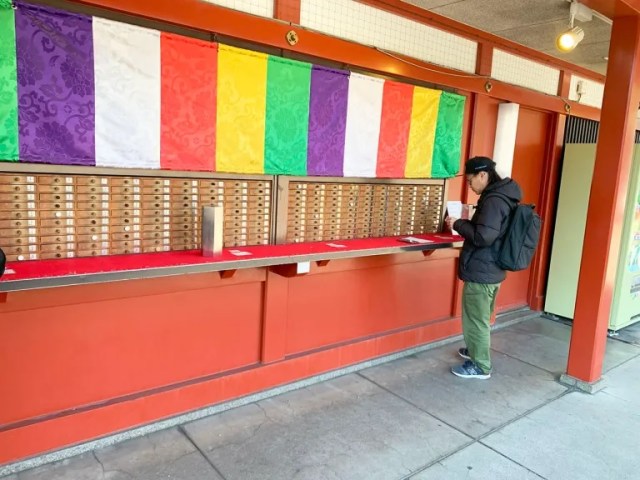
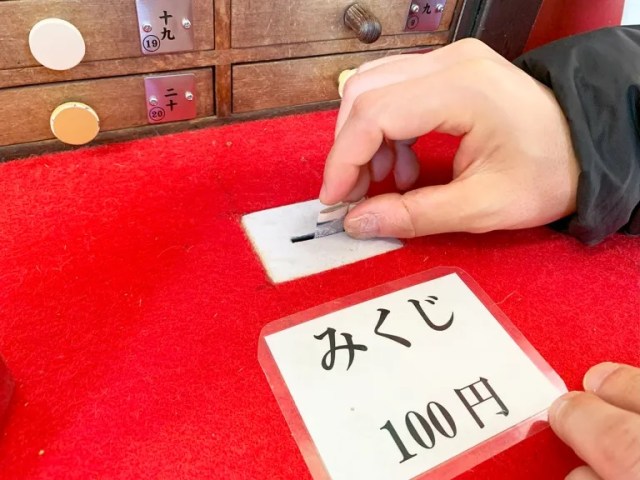
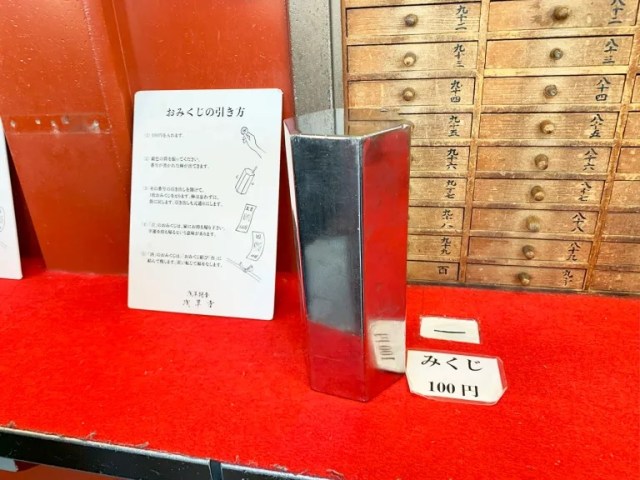
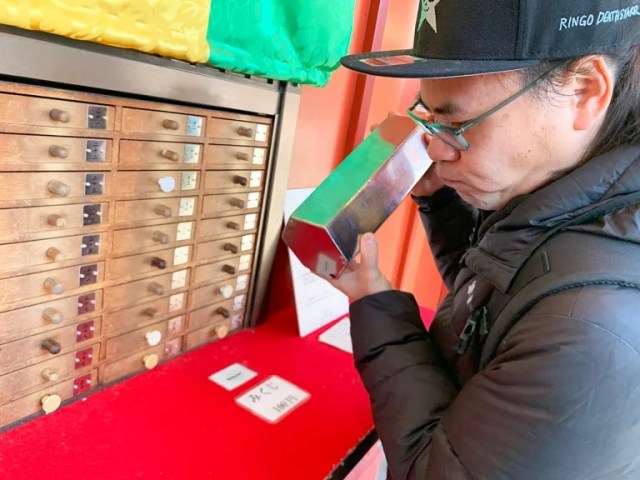
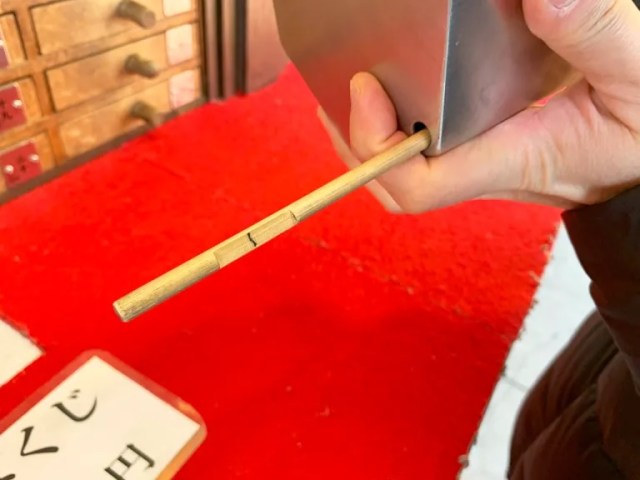
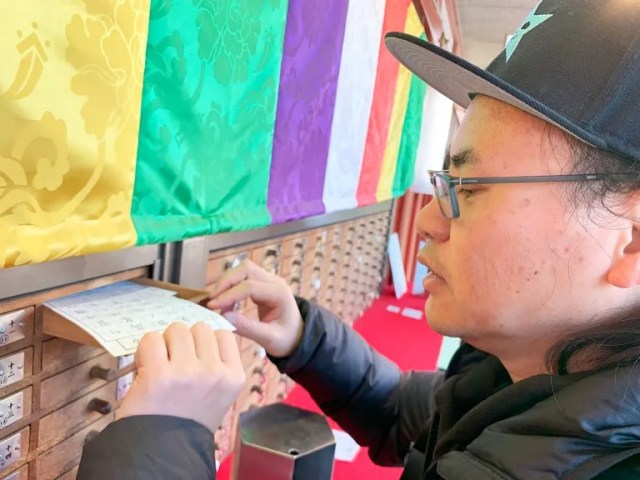
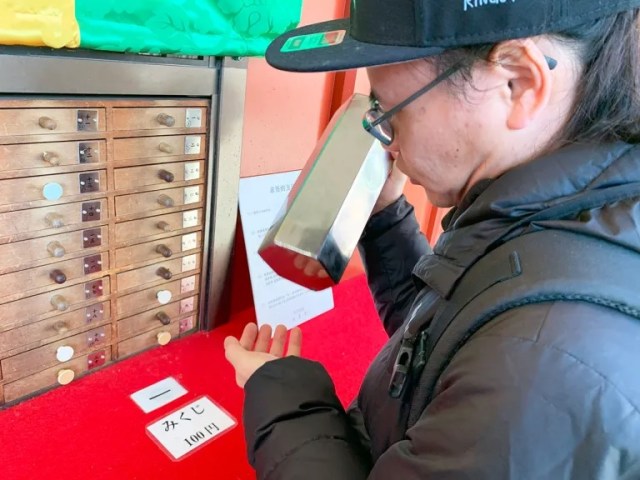
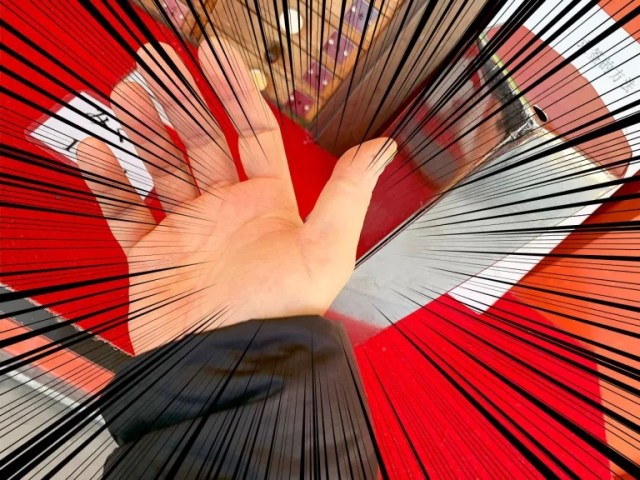
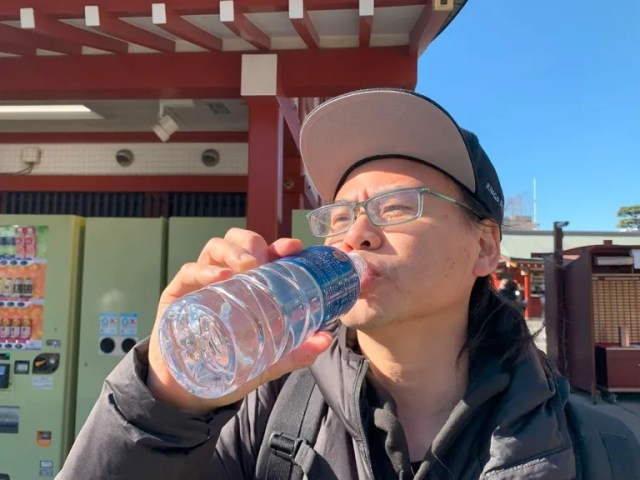
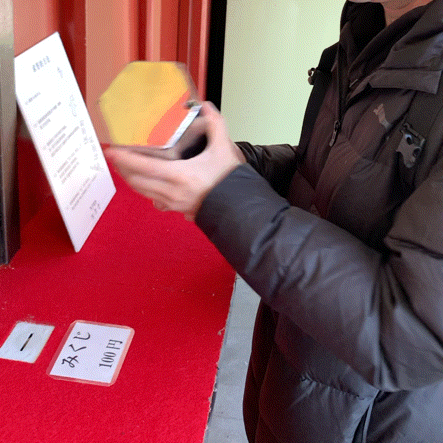
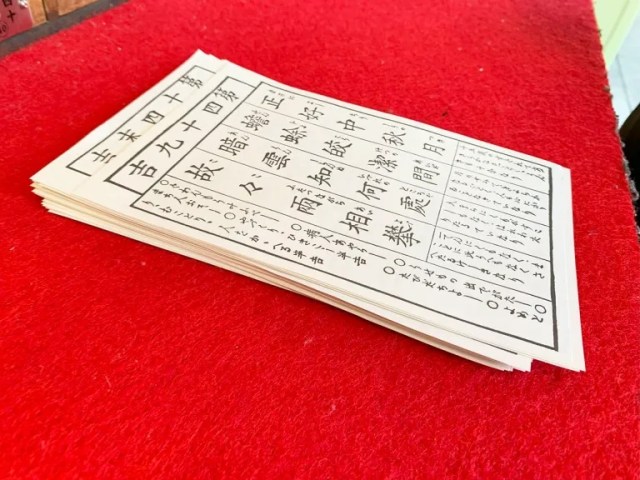
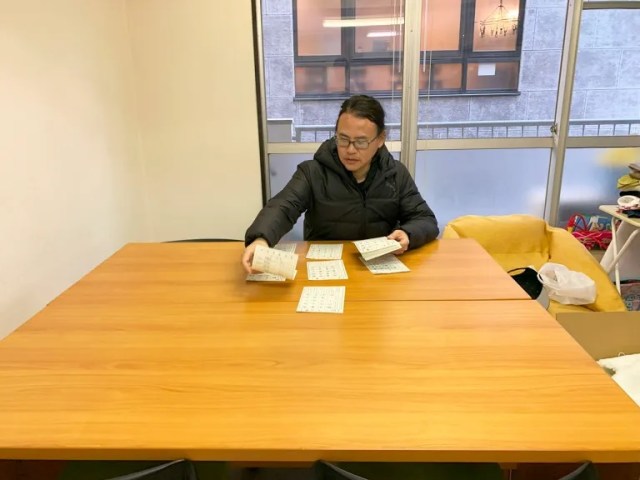

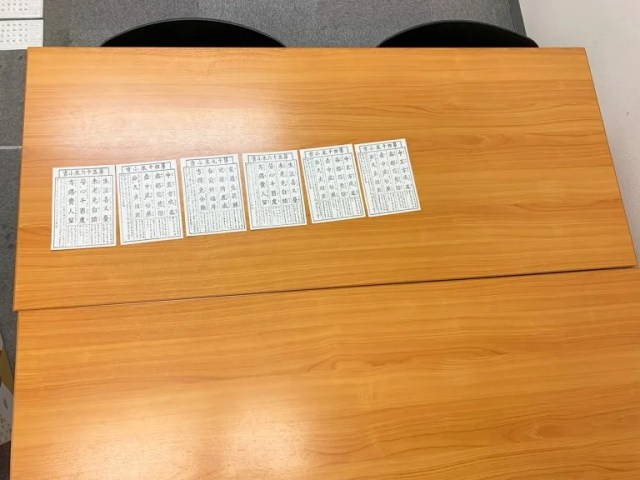

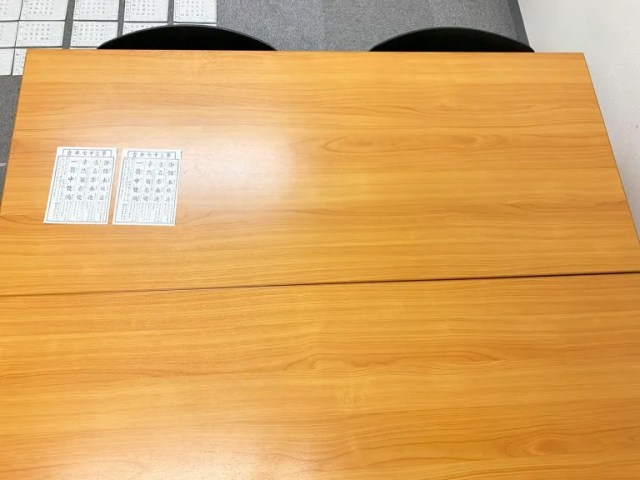
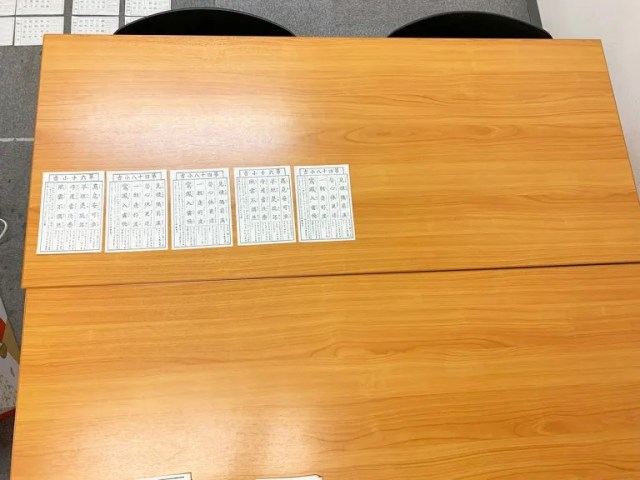
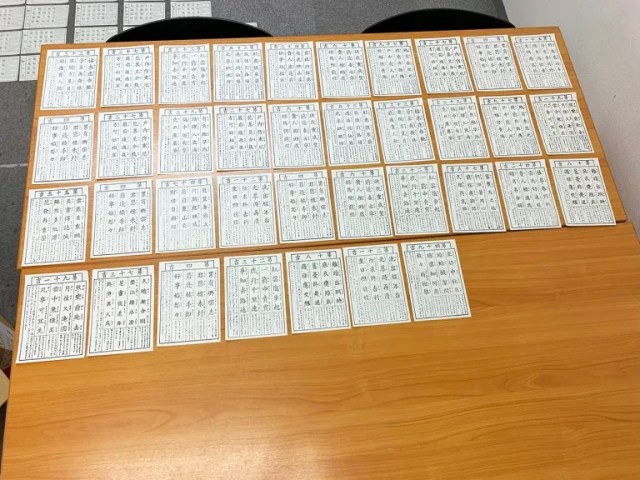
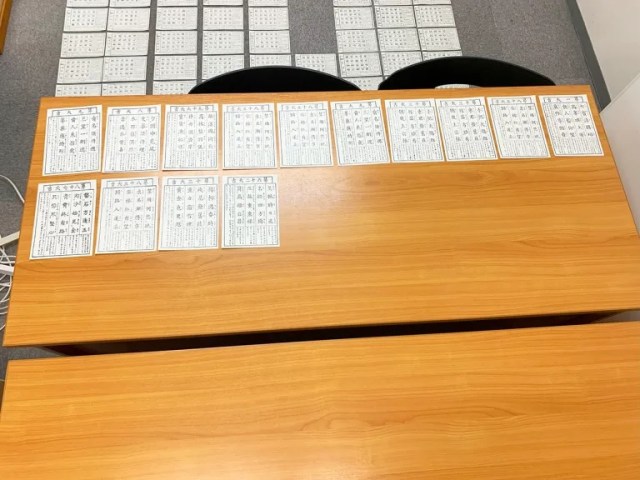
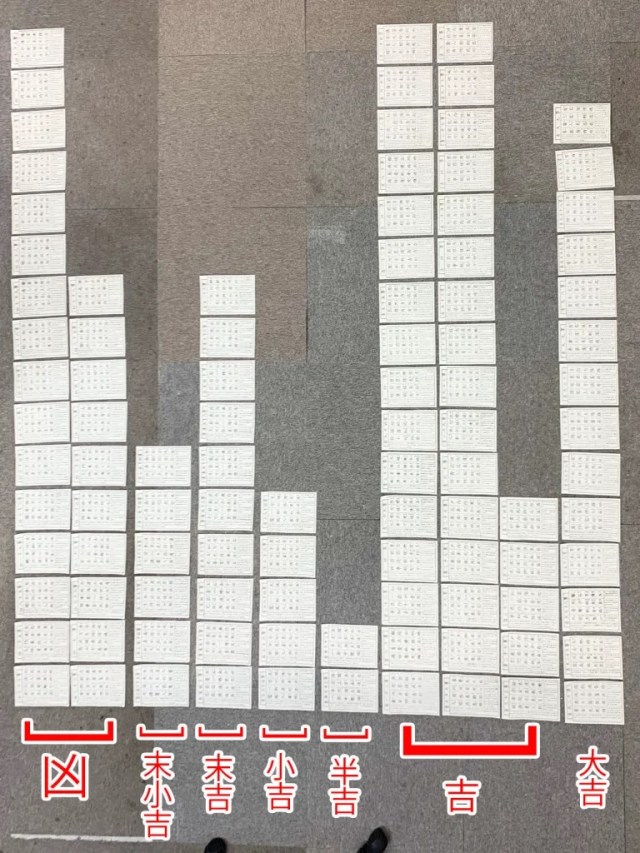
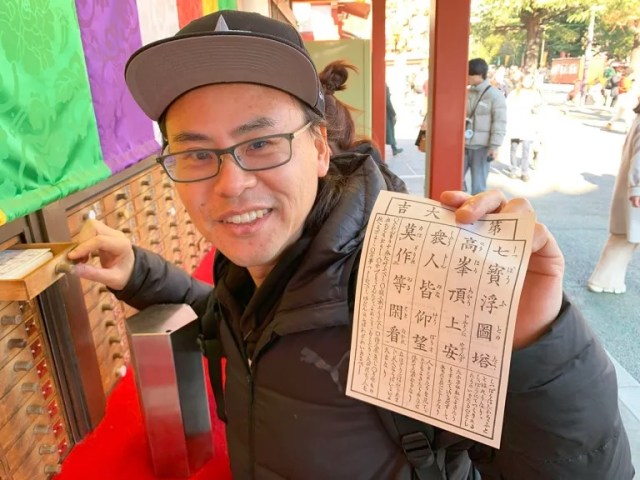
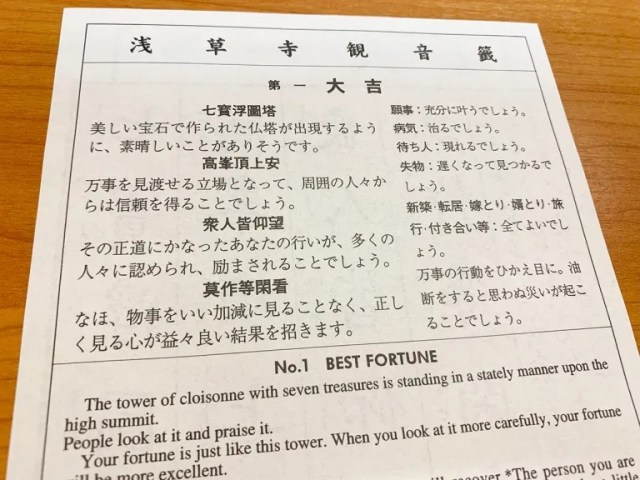
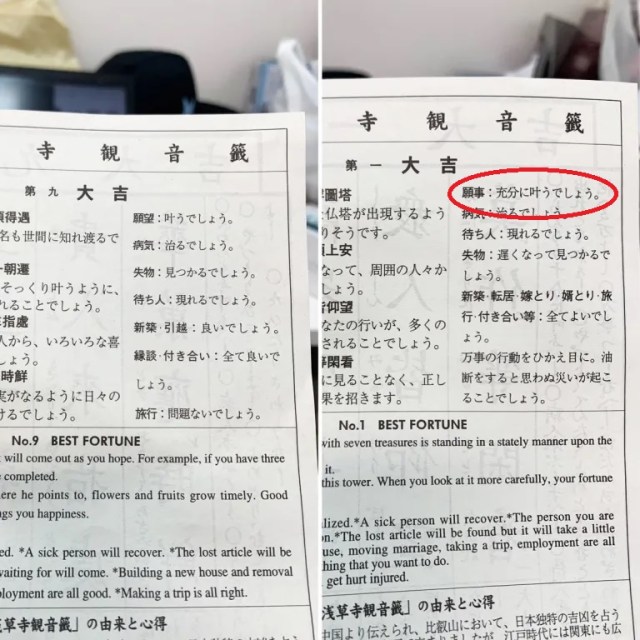
 Yoshinoya has a semi-secret chicken bowl you won’t find anywhere on its website【Taste test】
Yoshinoya has a semi-secret chicken bowl you won’t find anywhere on its website【Taste test】 Skip Starbucks? A super-cheap, semi-secret alternative to a coffeehouse break in Tokyo
Skip Starbucks? A super-cheap, semi-secret alternative to a coffeehouse break in Tokyo The surprising semi-secret ingredient in many Japanese convenience store rice balls: oil
The surprising semi-secret ingredient in many Japanese convenience store rice balls: oil Semi-secret fried chicken from Japan’s big-three beef bowl chain Sukiya is worth tracking down
Semi-secret fried chicken from Japan’s big-three beef bowl chain Sukiya is worth tracking down Soup curry and onigiri for breakfast at a super tasty semi-secret spot in Tokyo’s Shinjuku
Soup curry and onigiri for breakfast at a super tasty semi-secret spot in Tokyo’s Shinjuku How to order snacks on a Shinkansen bullet train in Japan
How to order snacks on a Shinkansen bullet train in Japan Hello, cosmetics! Clinique teams up with Hello Kitty this summer for first-time collaboration
Hello, cosmetics! Clinique teams up with Hello Kitty this summer for first-time collaboration Demon Slayer: Kimetsu no Yaiba gets new roller coaster attractions and food at Universal Studios Japan
Demon Slayer: Kimetsu no Yaiba gets new roller coaster attractions and food at Universal Studios Japan A visit to the best UFO catcher arcade in the universe!
A visit to the best UFO catcher arcade in the universe! To combat declining birth rate, Japan to begin offering “Breeding Visas” to foreigners
To combat declining birth rate, Japan to begin offering “Breeding Visas” to foreigners Spirited Away train station and submerged tracks attract Ghibli fans around Japan
Spirited Away train station and submerged tracks attract Ghibli fans around Japan Daiso DIY dessert! 100 yen store’s super-easy mochi sweets kit is our new hero
Daiso DIY dessert! 100 yen store’s super-easy mochi sweets kit is our new hero How should you respond when a Japanese person gives you a compliment?
How should you respond when a Japanese person gives you a compliment? New samurai glasses are Japan’s latest weird must-have souvenir
New samurai glasses are Japan’s latest weird must-have souvenir McDonald’s adds new watermelon frappe and fruity macaron to its menu in Japan
McDonald’s adds new watermelon frappe and fruity macaron to its menu in Japan Nintendo history you can feel – Super NES, N64, and GameCube controllers become capsule toys
Nintendo history you can feel – Super NES, N64, and GameCube controllers become capsule toys “The most Delicious Cup Noodle in history” – Japan’s French Cup Noodle wins our heart【Taste test】
“The most Delicious Cup Noodle in history” – Japan’s French Cup Noodle wins our heart【Taste test】 Starbucks releases a cute Frappuccino and Unicorn Cake…but not in Japan
Starbucks releases a cute Frappuccino and Unicorn Cake…but not in Japan Kyoto Tower mascot termination reveals dark side behind cute Japanese characters
Kyoto Tower mascot termination reveals dark side behind cute Japanese characters McDonald’s Japan’s Soft Twist Tower: A phantom ice cream only sold at select branches
McDonald’s Japan’s Soft Twist Tower: A phantom ice cream only sold at select branches Yabai Ramen: What makes this Japanese ramen so dangerous?
Yabai Ramen: What makes this Japanese ramen so dangerous? Finally! Nintendo Japan expands Switch 8-bit controller sales to everybody, Online member or not
Finally! Nintendo Japan expands Switch 8-bit controller sales to everybody, Online member or not Japanese government wants to build luxury resorts in all national parks for foreign tourists
Japanese government wants to build luxury resorts in all national parks for foreign tourists 10 things you should buy at 7-Eleven in Japan
10 things you should buy at 7-Eleven in Japan Studio Ghibli releases anime heroine cosplay dresses that are super comfy to wear
Studio Ghibli releases anime heroine cosplay dresses that are super comfy to wear Woman charged for driving suitcase without a license in Osaka
Woman charged for driving suitcase without a license in Osaka Studio Ghibli unveils My Neighbour Totoro miniature house model
Studio Ghibli unveils My Neighbour Totoro miniature house model Kyoto experiencing problems with foreign tourists not paying for bus fares, but not on purpose
Kyoto experiencing problems with foreign tourists not paying for bus fares, but not on purpose Fighting mild hunger with a Japanese soda that turns into jelly in the stomach【Taste test】
Fighting mild hunger with a Japanese soda that turns into jelly in the stomach【Taste test】 Studio Ghibli’s Howl’s Moving Castle tapestry unveiled in Japan for first time
Studio Ghibli’s Howl’s Moving Castle tapestry unveiled in Japan for first time McDonald’s new Happy Meals offer up cute and practical Sanrio lifestyle goods
McDonald’s new Happy Meals offer up cute and practical Sanrio lifestyle goods Sales of Japan’s most convenient train ticket/shopping payment cards suspended indefinitely
Sales of Japan’s most convenient train ticket/shopping payment cards suspended indefinitely Sold-out Studio Ghibli desktop humidifiers are back so Totoro can help you through the dry season
Sold-out Studio Ghibli desktop humidifiers are back so Totoro can help you through the dry season Japanese government to make first change to romanization spelling rules since the 1950s
Japanese government to make first change to romanization spelling rules since the 1950s Foreigner’s request for help in Tokyo makes us sad for the state of society
Foreigner’s request for help in Tokyo makes us sad for the state of society Ghibli founders Toshio Suzuki and Hayao Miyazaki contribute to Japanese whisky Totoro label design
Ghibli founders Toshio Suzuki and Hayao Miyazaki contribute to Japanese whisky Totoro label design Doraemon found buried at sea as scene from 1993 anime becomes real life【Photos】
Doraemon found buried at sea as scene from 1993 anime becomes real life【Photos】 Tokyo’s most famous Starbucks is closed
Tokyo’s most famous Starbucks is closed Princesses, fruits, and blacksmiths: Study reveals the 30 most unusual family names in Japan
Princesses, fruits, and blacksmiths: Study reveals the 30 most unusual family names in Japan Semi-secret Shinjuku sushi lunch is a great way to get your fish fix for cheap in central Tokyo
Semi-secret Shinjuku sushi lunch is a great way to get your fish fix for cheap in central Tokyo Fortune-telling ramen: Nissin creates clever use for instant noodle drain holes
Fortune-telling ramen: Nissin creates clever use for instant noodle drain holes Resol Poshtel: Cheap capsule hotel in Tokyo is a hit with overseas visitors, and we find out why
Resol Poshtel: Cheap capsule hotel in Tokyo is a hit with overseas visitors, and we find out why Celebrate TGK Day with a classic of Japanese kitchens, but with some luxurious ingredients
Celebrate TGK Day with a classic of Japanese kitchens, but with some luxurious ingredients Japanese sweets box from Amazon Japan is a treasure trove of dagashi nostalgia
Japanese sweets box from Amazon Japan is a treasure trove of dagashi nostalgia Buddhist monks cultivate cat haven at Fukui Prefecture’s “Kitty Temple”
Buddhist monks cultivate cat haven at Fukui Prefecture’s “Kitty Temple” Beckoning cat fortunes lure a kitten into their box at cat temple in Japan
Beckoning cat fortunes lure a kitten into their box at cat temple in Japan Japanese shrine maidens in Osaka spotted wearing unusual costumes during winter
Japanese shrine maidens in Osaka spotted wearing unusual costumes during winter Calling all fans of anpan! You can try 20 kinds of anpan at this specialty shop in Asakusa
Calling all fans of anpan! You can try 20 kinds of anpan at this specialty shop in Asakusa Eating a shark heart from a Tokyo supermarket【Photos】
Eating a shark heart from a Tokyo supermarket【Photos】 How do you beat Bic Camera’s Lucky Box lines, and what’s inside their Sim-Free Phone box?
How do you beat Bic Camera’s Lucky Box lines, and what’s inside their Sim-Free Phone box? This is the one and only kakuni pork bowl restaurant in Tokyo, and it’s amazing
This is the one and only kakuni pork bowl restaurant in Tokyo, and it’s amazing What happens when you cook beer with potato chips in a rice cooker?
What happens when you cook beer with potato chips in a rice cooker? You can send email from payphones in Japan?!? We try the technology trick that shocked the nation
You can send email from payphones in Japan?!? We try the technology trick that shocked the nation Takoyaki store in Osaka becomes a hot topic on Reddit, but is it any good?
Takoyaki store in Osaka becomes a hot topic on Reddit, but is it any good?
Leave a Reply